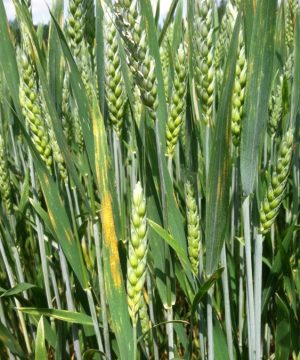Though it is still a little early to be making scab fungicide applications, it is time to start thinking about if and when to apply a fungicide to the wheat crop. Wheat in parts of Virginia is starting to head, but much of the crop is still at or close to flag leaf emergence. Stripe rust was observed this week in Warsaw, VA and has been confirmed on the Eastern Shore of Virginia and in southeastern Delaware. Stripe rust is likely widespread in the state, and susceptible varieties such as Shirley should be scouted for this disease. Stripe rust can spread very rapidly and a preventative fungicide may be needed to protect the wheat crop. More information on stripe rust and other wheat diseases can be found in a previous post. Wheat that is beginning to head this week will start flowering in a week or two. Currently, Fusarium Head Blight (FHB) risk is low in most parts of the state with a few moderate to high risk areas along the Eastern Shore. As the wheat crop starts to flower, it is important to monitor the FHB risk and apply fungicides as needed. Updates on FHB risk and management recommendations will be provided here and from the FHB Alert system throughout the period of flowering for the Virginia wheat crop. You can sign up for FHB text message and/or email alerts here. Also be sure to check the FHB Risk Tool (http://www.wheatscab.psu.edu/) as the wheat crop starts to flower. If FHB risk is moderate to high, an application of a fungicide (e.g. Prosaro, Caramba) may be needed to protect the crop from scab and DON contamination. An update fungicide efficacy table for wheat can be downloaded here:


Pingback: Wheat Disease Update – April 20, 2017 | Virginia Ag Pest and Crop Advisory